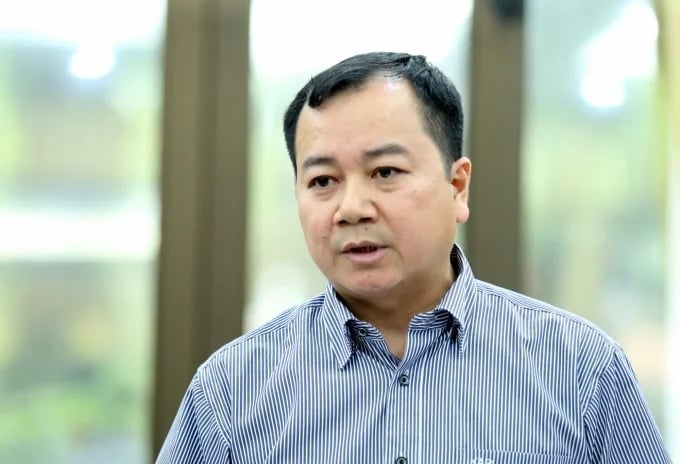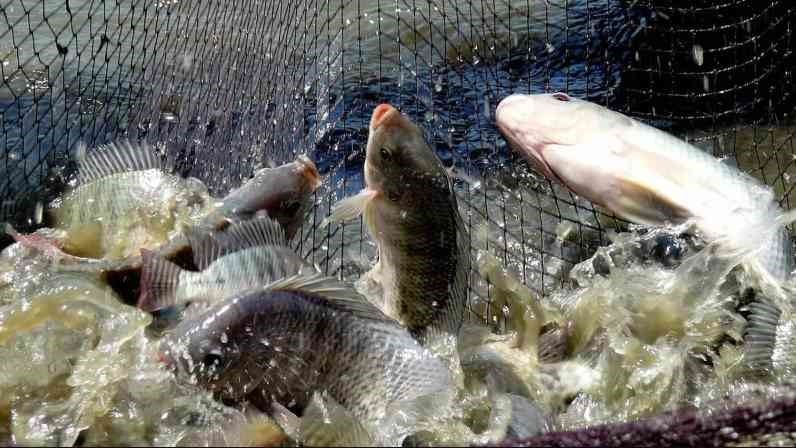December 4, 2025 | 13:30 GMT +7
December 4, 2025 | 13:30 GMT +7
Hotline: 0913.378.918
December 4, 2025 | 13:30 GMT +7
Hotline: 0913.378.918
Amidst the constant fluctuations of the global seafood market, tilapia is emerging as a potential object to help Vietnam diversify its export products and increase sustainable value. In an interview with the Vietnam Agriculture and Nature Newspaper (VAN News), Mr. Tran Dinh Luan, General Director of the Directorate of Fisheries (Ministry of Agriculture and Environment), shared his insights on the opportunities for developing the Vietnamese tilapia industry, the challenges that must be overcome, and strategic directions to build a comprehensive value chain for this commodity.

Mr. Tran Dinh Luan, General Director of the Fisheries and Fisheries Resources Surveillance Department (Ministry of Agriculture and Environment). Photo: MP.
VAN News: Adjustments to trade policies regarding imported tilapia in some markets could open up opportunities for other countries, including Vietnam. How do you assess the potential for Vietnamese tilapia to expand its export market in the near future, sir?
General Director Tran Dinh Luan: In the Fisheries Development Strategy and the Sustainable Fisheries Development Program, approved by the Prime Minister, tilapia has been identified as a priority object, alongside key species such as shrimp, pangasius, and other groups.
Over the past period, we have witnessed significant progress in terms of preparation, breeds, feed, and farming. As a result, from 2023 to 2024, the export value of tilapia increased from USD 17 million to USD 41 million.
The current context is extremely favorable, as our competitors, which are some countries with strengths in tilapia, are facing difficulties. This is an opportunity to develop key products and diversify products, including tilapia, which is one of the potential and competitive products.

Tilapia is a potential farming object of Vietnam's fisheries sector.
We have prepared well, drawing on scientific research on breeds and feed, as well as the development of farming models, particularly the establishment of associated cooperatives along the value chain. In addition to exporting products, these aquaculture cooperatives have also developed OCOP products for tilapia.
Market fluctuations and years of preparation are an advantage for unlocking the potential of the tilapia industry, particularly in freshwater and brackish water areas.
VAN News: Tilapia is considered one of the aquatic products with development potential thanks to its ease of farming and reasonable cost. However, this industry in Vietnam has not yet met the expectations in terms of scale and export value. In your opinion, what are the main challenges that hinder the development of this industry?
General Director Tran Dinh Luan: In the past, we placed excessive focus on some key objects, such as shrimp and pangasius, while neglecting other species with development potential. Moreover, in recent times, we have faced difficulties in preparing breeds and farming processes to promote the potential and advantages of tilapia.
We have yet to effectively utilize the water surface area in reservoirs or implement rotational farming between shrimp and tilapia, or between tilapia and other species, to ensure safety in the farming process, adapt to environmental changes, and diversify products.
It is time for us to gather resources and identify tilapia as a key object, thereby establishing standards and building linkages between breeding facilities, research institutes, seed production organizations, and farming areas.
In particular, a positive sign is that factories are now investing in tilapia processing technology lines. I believe that modern processing technology lines will be "tractors" for cooperation among management agencies, especially localities and agricultural extension systems, to train and build quality raw material areas that meet export standards.
VAN News: In the context of diversifying products and expanding export markets, what directions do management agencies have to support localities in developing a tilapia value chain, from breeds and farming processes to processing and consumption? Will there be priority policies or specific support for businesses and key farming areas?
General Director Tran Dinh Luan: We will categorize the areas to have appropriate development orientations. For example, the Long River reservoir area has been diversified for shrimp-tilapia farming. However, there are still potential farming areas that have not yet been standardized for tilapia farming.
Therefore, I propose that localities coordinate with specialized agencies, businesses, and individuals to establish standardized areas for raw materials. Secondly, in the Central and Northern regions, particularly around irrigation and hydropower reservoirs, we should allocate surface water to people, businesses, and cooperatives for aquaculture investment while linking these areas with processing factories.
Most importantly, we must establish quality standards for Vietnamese tilapia products to meet high standards at the request of the importing country. At the same time, we need to organize production systematically to reduce costs and ensure profits for farmers and processing factories.
Beyond the main products, tilapia offers numerous by-products such as fins, skin, and other parts that can be developed into value-added products. With such a comprehensive plan, we aim to close the tilapia value chain.
Along with the good preparation from businesses, localities, people, and management agencies, we will unlock the potential and establish a solid position in the global export market in a short time.
VAN News: Thank you, sir!
Translated by Thu Huyen

(VAN) After three years, Project FST/2020/123 collected approximately 3,000 insect specimens, classified them into about 50 morphological groups, and identified around 40 species, including several new species.
/2025/12/01/0509-2-175427_206.jpg)
(VAN) Emission-reducing coffee areas in Lam Dong have entered the new crop with stable yields, improved quality, and a remarkably enhanced cultivation environment.

(VAN) The Institute of Agricultural Sciences for Southern Vietnam (IAS) marked its 100th anniversary in Ho Chi Minh City, celebrating a century of growth as a leading institute contributing significantly to Viet Nam’s agricultural development.

(VAN) An increasing number of livestock farms are using biogas generators to create a source of renewable electricity, helping to save costs and mitigate environmental pollution.

(VAN) Small changes in rice cultivation, from irrigation methods and straw collection to input management, are paving a new way for Vietnam's agriculture in the journey toward emission reduction.

(VAN) With the project of converting biogas into renewable electricity, Australia is both helping pig farms reduce their energy costs by up to 25% and contributing to environmental protection.
![Hue aims for Net Zero: [1] Initial steps from green transportation](https://t.ex-cdn.com/nongnghiepmoitruong.vn/608w/files/huytd/2025/11/28/0853-anh-6-giao-thong-xanh-hue-094717_940-153724.jpg)
(VAN) For sustainable development, Hue City is implementing many solutions to promote green transportation, which is an important initial step on the journey to building a Net Zero Hue.